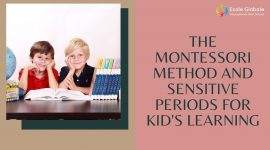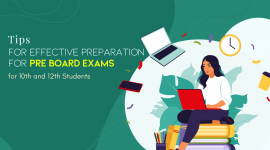Improving student literacy acquisition is a difficult endeavor that takes a great deal of responsibility, perseverance, and the ability to take a unique approach to kids. Students will not be able to make any progress unless their teacher is capable of motivating them to learn new literacy skills. A teacher must take a unique approach to each student with a specific issue in order to discover and solve the unique challenges that stand in the way of some students. Some of the challenges that a teacher may face in a reading class have been found after a careful examination of the case of Logan, a young student who refused to learn any reading skills at all.
Several key insights into the process of teaching reading have been discovered as a result of the experience of looking for ways to motivate Logan to read. First and foremost, it has been shown that pupils must learn to read at their own pace. What may appear to be a very sluggish reading speed for one student will be a sufficient reading speed for the next and far too fast for the third. As a result, it’s critical to ensure that each student has established their own reading pace and is able to coordinate their reading with the rest of the class.
Another crucial lesson learned while teaching Logan basic reading abilities and identifying the problem that generated his inability to absorb information through reading, despite his keen desire in learning new knowledge through other media (TV, social networks).
My foundational understanding of the development of reading skills in students has also benefited through the utilization of learning resources and practical assignments. I would never have been able to assist Logan to overcome his barriers and start getting involved in the process if I hadn’t used techniques to help kids improve their reading abilities, such as oral recounting and oral replies.
Logan’s worries of failing as a reader were alleviated by the exercises, which helped to both train the newly gained abilities and conquer Logan’s fears of failing as a reader once more. The exercises assisted the teacher in demonstrating to Logan that reading is, in fact, a fairly straightforward activity including a few basic steps. One of the primary tools that predetermined the successful end of the operation was the careful use of appraisal as a vital means of motivating Logan.
Logan’s first academic stage was checked, and additional progress was evaluated, therefore the assessments should be seen as vital tools in managing Logan’s development as a reader.

As previously stated, the major tools for conducting the evaluation were oral response and retell; the key measuring tool was a comparison of the quality and amount of material repeated (Henk & Melnisk, 1995), which provided a very precise assessment of Logan’s progress.
It’s odd that the instruments indicated above, particularly the retelling exam, gave the precise numerical equivalent of Logan’s improvement. The number of information blocks reproduced by the student as compared to the prior test results during the assessment procedure.
Logan’s results in the above-mentioned test improved by 500% over the course of his training: in his final test, he was able to reproduce six times more information than he had in his first.
Even if the new information I learned while speaking with Logan and dealing with his situation is not new, it will still be useful in my future teaching profession. It’s crucial to remember that students’ progress differs from the class’s overall success and that individual considerations must be considered when addressing a specific reading or other academic challenges that a student may have.
Based on my previous experience, the next step for me as a reading teacher is to figure out how to incorporate exercises for improving individual students’ literacy into the overall class plan. It will also be necessary to determine whether working in a group may increase pupils’ willingness to read more. The pupils’ motivation for longevity analysis is the third goal.
Despite the fact that the problem, which arose when Logan, one of the students, began to show a complete lack of interest in reading, was difficult to approach, defining the next strategy became possible with the evaluation of the student’s motivation and the adoption of the key principles of literacy instruction.
Logan’s case demonstrates that, in order to fix pupils’ reading challenges, a literacy teacher must think outside the box and come up with a unique solution while adhering to the principles outlined by existing developmental theories. Teaching pupils to read is one of the most important responsibilities that will determine their future success, and it must be approached with caution and responsibility.
Finally, the Work and Efficacy beliefs are present when a student believes that they can succeed at a certain reading activity and that their effort will likely result in an improvement in their reading ability and knowledge. We can enhance Efficacy by being clear about what success looks like for a specific reading task, and we can improve Effort by applauding kids for specific, deliberate, and effective efforts they’ve made to develop their reading skills during their time in school.
For any queries related to parenting, schooling, or for any student-related tips, click here to check out our latest blogs









